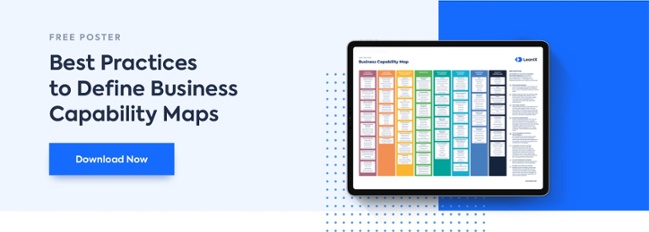
FEAF is the US Federal Enterprise Architecture Framework, which is used to integrate the various systems and applications leveraged by the different arms of the largest government in the world. Let's explore what enterprise can learn from the FEAF framework.
The US Federal Enterprise Architecture Framework (FEAF) is a custom-designed EA framework intended to standardize and optimize IT acquisition and architecture across all the departments of the world's largest government. While FEAF isn't intended for enterprise, it's a framework for managing a complex architecture, and there's a great deal organizations can learn from it.
Far from least among the lessons is the standardized acquisition process that FEAF prescribes for vendors to the US government. Adapting to FEAF could make it easier for organizations to sell their software to one of the biggest global software buyers.
FEAF can be thought of as a modular system, meaning that you can easily choose the most-valuable aspects of the framework for your unique organization and merge it with other systems to create your own custom framework. It's beneficial for any enterprise architect to familiarize themselves with FEAF.
To find out more about major enterprise architecture frameworks that you can learn for to enhance your own practice, read our rundown:
READ: Comparison Of Top 5 Enterprise Architecture Frameworks
What Is FEAF?
The US Federal Enterprise Architecture Framework (FEAF) was first published in 1999 as an initiative of the Office of E-Government and IT. FEAF was initially formulated as a response to the perceived threat of the Y2K bug, which would enable the US government to rapidly adapt its IT landscape to resolve the issue.
At the time, it was believed that the change of year from "99" to "00" in IT systems could cause widespread panic and a rapid restructure of IT systems was needed. In truth, the threat was overstated, but the value of a framework to rapidly evaluate and retool IT infrastructure was still readily apparent and FEAF was enacted.
The FEAF framework itself was designed to build on common architectural practices, such as the National Institute of Standards and Technology (NIST) EA framework, to create a system-agnostic methodology that would empower government agencies to adapt to cyber security and IT architectural threats. FEAF is intended to help IT architects operate within a bureaucratic system by enhancing collaboration and awareness, something most enterprise architects could benefit from just as much.
Since FEAF was designed to work in any government agency in combination with any other set of policies or procedures, it's also compatible with consumer enterprise architecture frameworks. This allows enterprise architects to take the best aspects of FEAF and other systems and create a custom framework that works for them.
To find out more about FEAF, read our guide:
READ: A Definitive Guide To FEAF
FEAF Reference Models
The second version of the US Federal Enterprise Architecture Framework, FEAF-II, was released in 2013, and comprises a series of reference models to use as templates for building your IT landscape. It reworks the first version's five reference models, combining the business and service models, while separating technology into applications and infrastructure, and adding a focus on security.
The new models are:
1 Performance Reference Model (PRM)
The PRM links your overall strategy and internal business architecture with your IT landscape. This allows you to model your IT investments to support your key metrics.
2 Business Reference Model (BRM)
The BRM is similar to the PRM above, but rather than performance metrics, it looks specifically at the services you provide to your stakeholders. It looks at these business services from the perspective of the consumers, rather than the providers, which makes the perspective agnostic who is providing the services.
To fill the same function, we've put together a template for mapping your business capabilities that you can download for free:
3 Data Reference Model (DRM)
DRM focuses on retrieving data from siloes and bringing it together into a data warehouse, where it can be accessed and collaborated on by all parties. The model also includes methodology for data discovery processes and enablement.
4 Application Reference Model (ARM)
ARM tracks to the standard application portfolio management function of enterprise architecture. Since the framework standardizes your application portfolio information across all your applications, this allows that information to be re-used across departments and even subsidiaries.
For support with your application portfolio management, download IDC's report:
IDC INFOBRIEF: Setting The Stage For Growth With Data-Driven Application Rationalization And Portfolio Management
5 Infrastructure Reference Model (IRM)
IRM is a crucial cost-saving measure that synergizes and streamlines the technology used by different government agencies. By ensuring that all your architectural units are leveraging the same toolset, you can maximize your return on investment.
6 Security Reference Model (SRM)
Finally, the newest addition to the FEAF framework is an umbrella model that encompasses all the other five models. It focuses on building a consistent terminology for discussing security and privacy.
Applying The FEAF Framework
Applying the above six US Federal Enterprise Architecture Framework (FEAF) reference models will almost certainly involve you undergoing a transformation to adapt your existing landscape. Under FEAF, transformations are guided by a Collaborative Planning Methodology (CMP) that follows five stages:
- Identify and validate - confirm the purpose of your transformation efforts and the metrics by which you will measure success
- Research and leverage - speak to your colleagues and network to discover how others have dealt with similar transformations
- Define and plan - build a comprehensive plan for your transformation, with a timeline and finalized metrics, that's been approved by your stakeholders
- Invest and execute - finalize your budget for transformation and execute your plan
- Perform and measure - track your success against your initial metrics to show the value of your methodology
This process creates a framework for repeated business transformation, empowering you to continuously develop and adapt your IT landscape to meet the needs of the market. All you need now is the right repository to store your enterprise architecture information in order to track and map it against the FEAF framework.
Building A Customer Enterprise Architecture Framework
The US Federal Enterprise Architecture Framework (FEAF) is just one of many enterprise architecture frameworks out there. Enterprise architects should be looking to find the best elements of each system to support their own practice, rather than slavishly prescribing to any one methodology.
To discover your current IT landscape and adapt it to fit the best-practice of your chosen frameworks, you need a tool that will allow you to map your as-is state and build your vision for transformation. That tool also needs to be compatible with whichever framework you choose to leverage.
To find out how SAP LeanIX can help you leverage the best practices of a variety of frameworks, book a demo:

.png?width=140&height=107&name=BTMPlaybook-FI%20(1).png)

